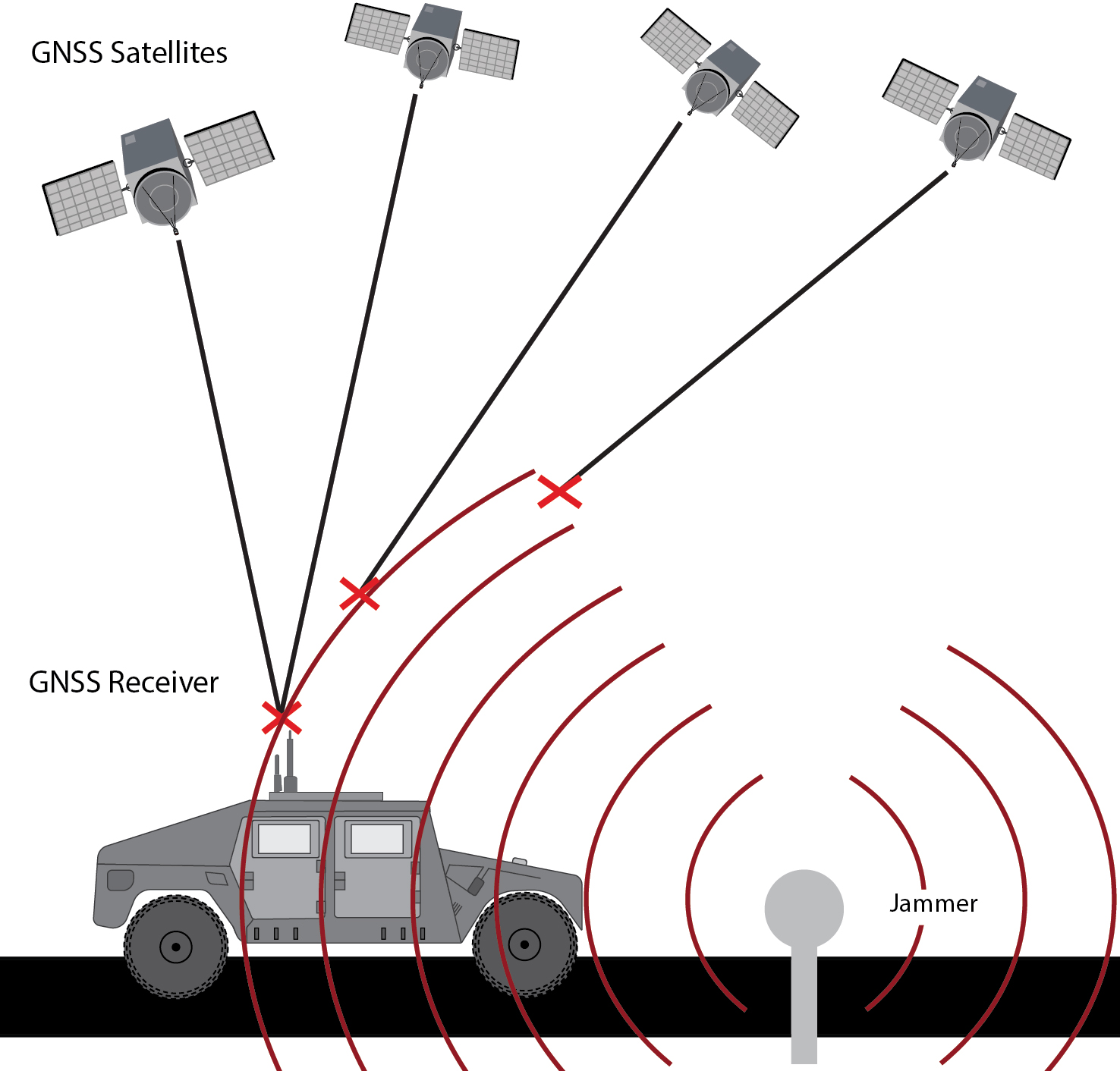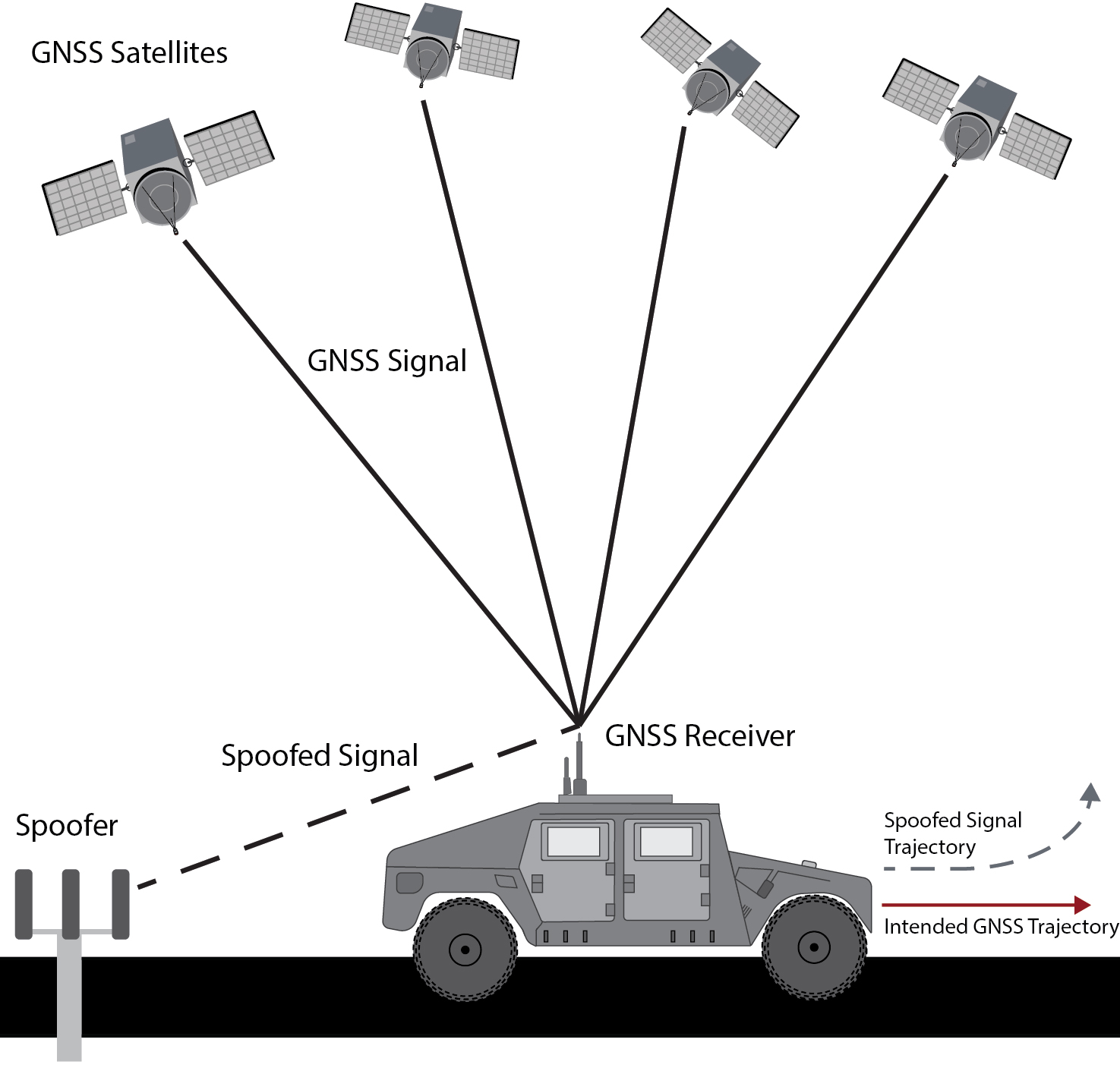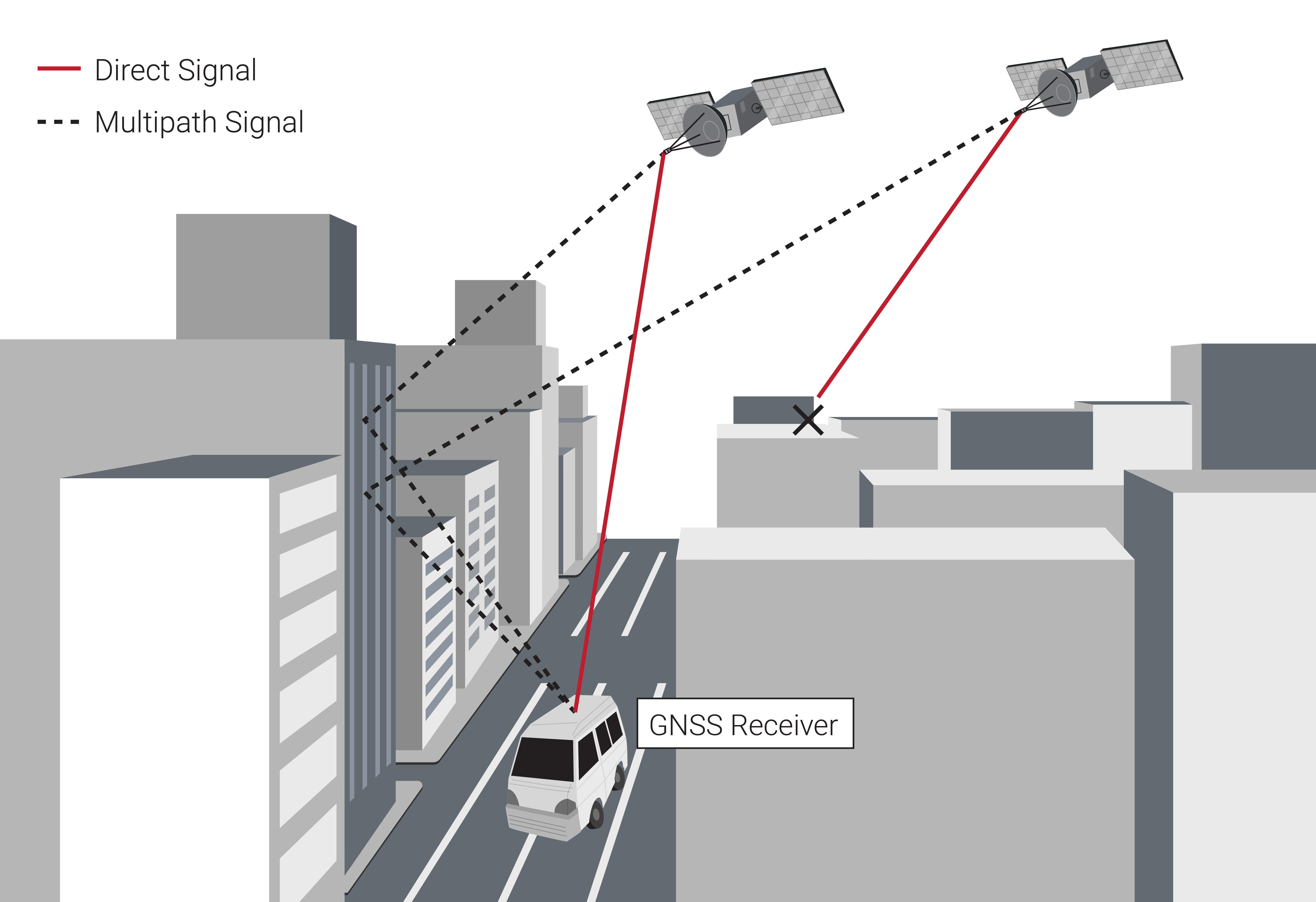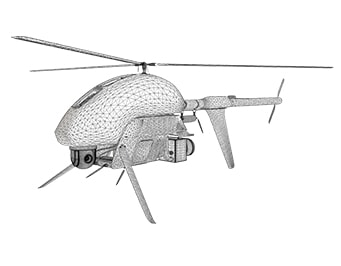Educational Material
5.1 GNSS-Challenged Environments
A major drawback of a GNSS-aided navigation system is how weak the GNSS signal is once it reaches a receiver on Earth. Consequently, it can be quite easy to disrupt GNSS, whether unintentional or deliberate. Such disruption could degrade the signal or even deny its reception altogether.
GNSS-Degraded Environments
GNSS-degraded environments occur when a GNSS signal is present but degraded in some way. This is most often caused by signal interference which causes a disturbance on the signal transmitted by the GNSS satellites. Such interference can be deliberate, as in the case of jamming or spoofing, or unintentional, such as disturbances from radio broadcasting signals or multipath interference. Even something as simple as a hardware malfunction along the RF path, such as a bad GNSS antenna or loose connection, could lead to degraded GNSS conditions. In these environments, specialized hardware and algorithms exist, as discussed in Section 5.2, that can help mitigate these challenges and allow GNSS to be used for navigation.
Jamming
Because GNSS signals are quite weak when received by an antenna on Earth, they can easily be overwhelmed by higher-power signals. Jamming is the intentional use of such higher-powered signals to drown out the signals transmitted by the GNSS satellites, as seen in Figure 5.1a. This prevents a GNSS receiver from tracking the GNSS signals and providing a navigation solution. Though a jamming system is typically operated from the ground, it can render GNSS unusable over a wide area—sometimes up to hundreds of kilometers.


Spoofing
Spoofing is a deliberate attack in which false GNSS signals are generated with the intent to lead a GNSS receiver off track. Because the structure of many of the GNSS signals is publicly known, an adversary can construct signals closely resembling those from the GNSS satellites but with incorrect information. Often, a spoofer will first jam the GNSS signals they intend to spoof, preventing a user's GNSS receiver from tracking the GNSS signals. The spoofed signals are then broadcasted by the spoofer at a higher power level than the GNSS signals, causing the GNSS receiver to lock primarily onto the false signals rather than those from the GNSS satellites. This leads the GNSS receiver to calculate an incorrect navigation solution as shown in Figure 5.1b—most commonly an incorrect position, but potentially an incorrect time as well. All GNSS constellations are vulnerable to a spoofing attack, however, the complexity of generating consistent counterfeit signals increases as additional constellations and frequencies are added.
Unintentional Interference
GNSS signals are broadcast at specific frequencies in the L-band of the electromagnetic spectrum. This portion of the electromagnetic spectrum is highly regulated to prevent unintentional interference from other radio transmissions. However, signals in other bands can sometimes bleed over into the GNSS frequencies. Often this is caused by equipment operating too close to a GNSS antenna or higher-powered signals that have harmonics in the GNSS bands, such as television broadcasts. Similar to jamming, this unintentional interference overwhelms the GNSS signals causing a receiver to lose track of the signals on that GNSS frequency. Typically, only a single GNSS frequency is affected by unintended radio interference.
Multipath Interference
Multipath interference occurs when GNSS signals reflect off solid objects or surfaces, such as buildings and terrain, resulting in the signal taking multiple paths to reach the antenna, as shown in Figure 5.2. These reflected signals are delayed compared to direct line-of-sight signals, causing errors in the pseudorange and carrier phase measurements. Multipath interference is most commonly encountered in areas heavily populated with tall buildings, known as urban canyon environments, though any system lacking a clear view of the sky is susceptible to such interference.

GNSS-Denied Environments
Environments that are completely devoid of a GNSS signal are often referred to as GNSS-denied environments. Such environments include indoor settings, underground or underwater applications, and GNSS jamming scenarios when access to anti-jamming hardware is not available. In such scenarios, other navigation sensors and techniques must be relied upon to provide localization information, often through a multi-sensor approach. Some of the more common localization approaches for GNSS-denied navigation are detailed in Sections 5.3 and 5.4.
